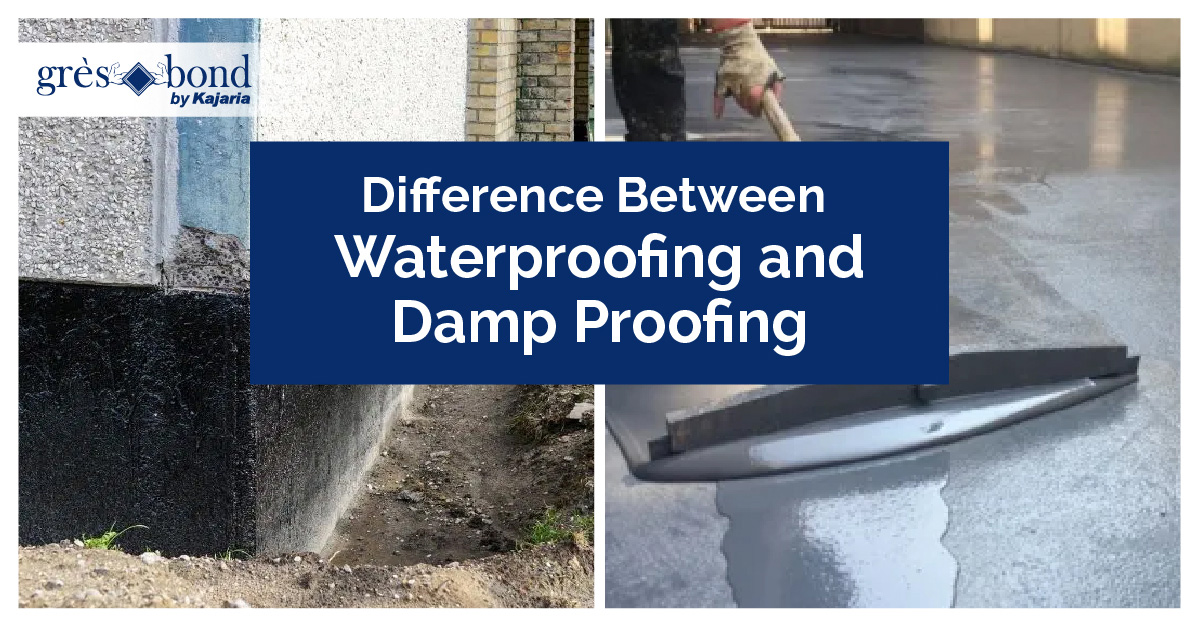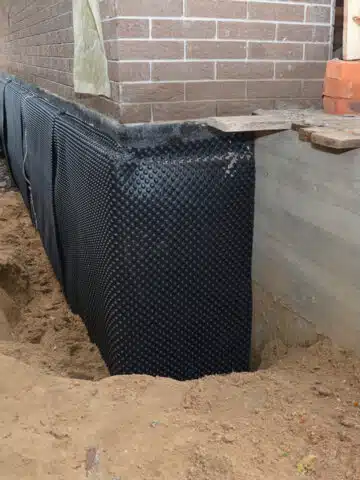Essential strategies for mould removal newcastle that work
Essential strategies for mould removal newcastle that work
Blog Article
Checking Out the Different Methods and Solutions for Effective Damp Proofing
Wetness in structures poses significant difficulties to both architectural stability and interior air top quality. Various techniques and solutions have arised to combat this prevalent problem. From traditional damp-proof membranes to innovative chemical therapies, each technique supplies distinct advantages. Comprehending these alternatives is vital for reliable moisture control. Choosing the right solution depends on particular structure problems and needs, triggering additional exploration right into the most reliable wet proofing methods offered.
Comprehending the Root Causes Of Dampness
Wetness can develop from various sources, recognizing these causes is crucial for effective remediation. Frequently, moisture stems from 3 key sources: rising moist, penetrating moist, and condensation. Climbing damp happens when groundwater takes a trip up-wards through permeable products, such as brick or stone, commonly as a result of an absence of an efficient barrier (damp specialist newcastle). Penetrating damp is usually caused by outside elements, including roof covering leakages, defective rain gutters, or harmed walls, permitting water to infiltrate a property. Condensation, on the various other hand, arises from excess wetness in the air, often aggravated by bad ventilation and temperature level distinctions, causing water beads creating on surface areas. Determining these underlying problems is necessary, as each sort of dampness requires a customized method for removal. Proper assessment assists in determining one of the most effective solutions, ultimately protecting the architectural integrity of a building and enhancing indoor air quality
Standard Damp-Proof Membranes

Chemical Damp-Proofing Solutions
Chemical damp-proofing solutions offer an ingenious technique to avoid wetness intrusion in buildings. These methods typically include the application of liquid chemicals that penetrate masonry and form an obstacle against rising wet. Frequently used chemicals consist of silanes, siloxanes, and various other water-repellent representatives that respond with surface materials to create a hydrophobic layer.The application procedure generally calls for boring openings right into the wall surfaces, infusing the chemical service, and enabling it to heal. This approach is particularly useful for older structures where standard damp-proof membranes might be not practical. Chemical damp-proofing can be much less disruptive and a lot more cost-effective than extensive renovation projects.While efficient, these options depend on correct application and ecological conditions for peak performance. mould treatment newcastle. Normal maintenance and monitoring are necessary to assure the longevity of the damp-proofing therapy. Overall, chemical damp-proofing represents a functional option for protecting buildings against moisture-related damages
Tooth Cavity Wall Building And Construction Methods
Dental caries wall construction strategies offer countless advantages, especially in moisture control and energy performance. By integrating an air space in between 2 layers of stonework, these wall surfaces properly mitigate water ingress while enhancing insulation. This combination not just secures structures from moisture but additionally contributes to lowered energy consumption.
Advantages of Dental Caries Wall Surfaces
When taking into consideration effective moist proofing methods, the benefits of cavity wall surfaces stand out plainly. Cavity walls consist of two different layers, developing an air gap that efficiently decreases wetness infiltration. This design lessens the threat of wetness, as the external wall surface acts as a barrier versus rain and water access. In addition, tooth cavity wall surfaces boost thermal insulation, which adds to energy efficiency by minimizing warm loss. They additionally offer sound insulation, aiding to create a quieter interior environment. The air gap allows for air flow, which helps in moisture control and reduces the chance of mold and mildew growth. These benefits not just enhance the general comfort of a structure but also add to its long life and architectural honesty.
Wetness Control Techniques
Effective wetness control approaches are vital in cavity wall building to guarantee long-term protection against moisture. One key method entails the consolidation of weep openings, which promote water drain from the tooth cavity, preventing buildup. In addition, making use of breathable membrane layers can assist manage moisture degrees while permitting caught vapor to run away. Proper placement of insulation is additionally important, as it must not obstruct drain courses. Moreover, making sure that the external leaves of the tooth cavity wall surface are created with water-resistant materials boosts overall toughness. Regular maintenance checks are vital to recognize any kind of clogs or damages early, guarding the framework's integrity. Eventually, a mix of these strategies creates a durable protection versus dampness breach in dental caries wall surfaces.
Insulation and Power Effectiveness
Insulation plays an essential duty in boosting energy performance within tooth cavity wall building. By incorporating protecting products, these wall surfaces develop a thermal barrier that reduces heat loss and minimizes energy usage. Efficient insulation not just aids maintain a stable interior temperature however likewise alleviates the risk of wetness, as it stops condensation within the wall tooth cavity. Different techniques, such as using inflexible foam boards or mineral wool, can be utilized to achieve perfect insulation efficiency. Furthermore, appropriate setup is crucial to assure that spaces and gaps are minimized, which can otherwise jeopardize energy performance. Ultimately, a well-insulated cavity wall surface contributes greatly to overall sustainability and reduces heating & cooling expenses for homeowners.
Exterior Damp Proofing Approaches
External moist proofing techniques are essential for safeguarding frameworks from wetness infiltration. Two reliable strategies consist of the application of water resistant membranes and the installment of French drains pipes. These services aid alleviate water accumulation and maintain the stability of buildings.
Waterproof Membrane Application
While numerous techniques exist for protecting against wetness access, the application of waterproof membrane layers remains an extremely reliable outside damp proofing strategy. These membrane layers are commonly made from materials such as polyethylene, rubber, or customized asphalt, giving a robust barrier against water penetration. The installment procedure involves using the membrane layer to the exterior surfaces of structures or wall surfaces, making certain full protection to avoid leakages. Proper adhesion and sealing at joints are crucial to taking full advantage of performance. Waterproof membranes can be applied in different forms, consisting of fluid coverings and sheet membranes, enabling adaptability based on the specific demands of the structure. This technique not just safeguards structures from moisture but also enhances their longevity and structural integrity.
French Drain Setup
One efficient method for taking care of groundwater and stopping dampness build-up around a structure's foundation is the setup of a French drain. This drain system consists of a trench loaded with crushed rock and a perforated pipeline that redirects surface water far from the structure. Appropriate installation calls for cautious planning, guaranteeing that the drainpipe inclines away from the framework to facilitate perfect water flow. In addition, the place of the drain is crucial; it ought to be positioned in locations susceptible to pooling or excess wetness. Regular upkeep, consisting of clearing up particles from the gravel and guaranteeing the pipe remains unhampered, is necessary for long-lasting efficiency. Ultimately, a well-installed French drainpipe can greatly reduce the threat of water-related problems in structures and cellars.
Interior Waterproofing Approaches
Inside waterproofing approaches are crucial for shielding a structure's interior from dampness infiltration and potential water damage. These approaches commonly include the application of customized materials and strategies designed to produce a dampness barrier within the framework. One common strategy is the use of water-proof coverings or sealers on walls and floors, which stop dampness from penetrating surfaces.Additionally, setting up interior water drainage systems, such as sump pumps, can efficiently take care of water accumulation in basements and creep rooms. Another technique includes making use of vapor barriers, which are set up to hinder moisture movement from the ground into living spaces.Moreover, attending to any kind of cracks or spaces in wall surfaces or foundations with appropriate sealers assures a comprehensive protection against water intrusion. By applying these interior waterproofing techniques, property owners can significantly lower the threat of mold and mildew growth, architectural damage, and other moisture-related issues. Proper execution of these strategies is important for lasting security and building stability.
Routine Upkeep and Inspection Practices
Regular maintenance and inspection methods are important for ensuring the long-lasting performance of damp proofing options in any building. Regular checks allow homeowner to determine very early signs of moisture invasion, such as peeling off paint, mold and mildew development, and musty odors. These indicators can signal underlying problems that need immediate attention.Inspections should be conducted a minimum of yearly, concentrating on prone areas like basements, crawl rooms, and outside walls. Throughout these analyses, property owners ought to take a look at sealants, water drainage systems, and ventilation to verify they operate correctly.Additionally, preserving downspouts and gutters is necessary, as blocked systems can lead to water build-up near the foundation. Implementing a normal upkeep timetable, along with timely repair services, can substantially expand the life expectancy of damp proofing actions and secure the structural honesty of the building. Aggressive steps ultimately add to the total health and wellness of the living environment.
Often Asked Inquiries
How Long Does Damp Proofing Generally Last?
The period of wet proofing effectiveness varies, usually lasting between 20 to half a century. Factors such as application quality, environmental problems, and upkeep practices substantially influence the durability of the wet proofing therapy.

Can I Damp Evidence My Home Myself?
The private pondered the expediency of DIY damp proofing. With appropriate research and the right products, it is feasible. Nonetheless, they also identified the significance of specialist assistance to assure lasting effectiveness and prevent future concerns.
What Are the Indicators of Inadequate Damp Proofing?
Indications of inadequate moist proofing consist of consistent stuffy smells, noticeable mold development, peeling off paint, damp patches on wall surfaces, and timber decay - damp specialist newcastle. House owners must address these issues without delay to stop more damages and wellness problems
Does Damp Proofing Affect Indoor Air Quality?

How Much Does Specialist Damp Proofing Expense?
Specialist damp proofing prices differ considerably, typically ranging from $1,000 to $5,000 relying on the residential or commercial property's size, the degree of the moist issue, and picked methods. Each circumstance requires a customized assessment for accurate prices. Generally, dampness originates from 3 key resources: rising damp, penetrating moist, and condensation. When considering reliable moist proofing techniques, the benefits of tooth cavity wall surfaces stand out plainly. Exterior moist proofing approaches are crucial for securing frameworks from wetness seepage. While numerous techniques exist for preventing wetness here access, the application of water resistant membranes stays a highly efficient exterior moist proofing strategy. Indications of inefficient wet proofing consist of consistent moldy smells, visible mold growth, peeling off paint, wet spots on wall surfaces, and timber degeneration.
Report this page